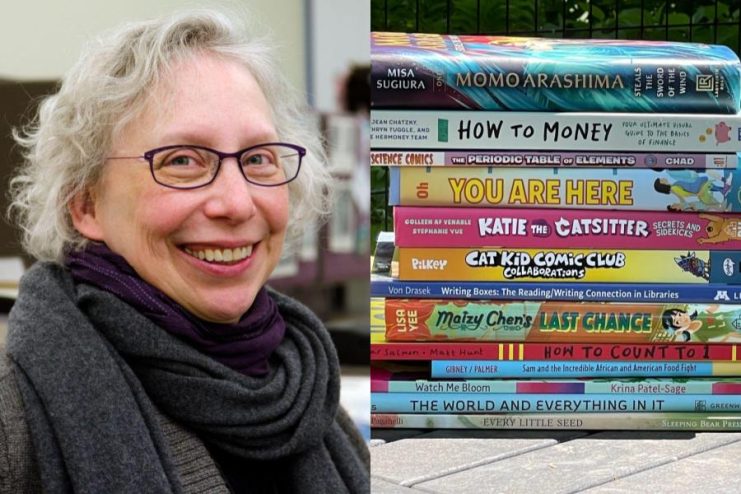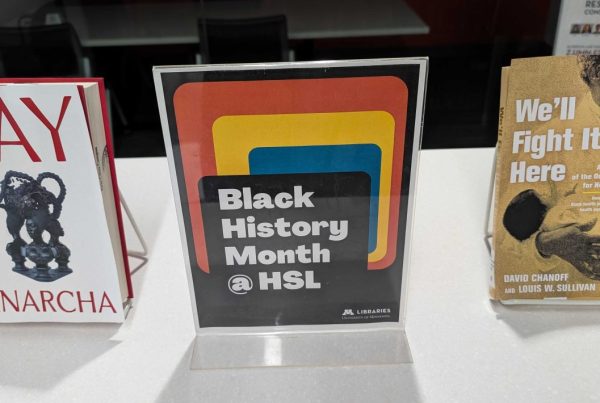 Summer learning loss is a concern for many parents and educators as students finish the school year and spend time away from the classroom during summer break.
Summer learning loss is a concern for many parents and educators as students finish the school year and spend time away from the classroom during summer break.
Lack of access to reading materials and continued education are two factors that often contribute to this loss of learning, but families can take steps on their own to support reading development this summer.
Lisa Von Drasek, curator of the Kerlan Collection of Children’s Literature at the University of Minnesota, answers questions about how to keep kids reading all summer long.
Q: My child is eagerly awaiting a break from school – how can I help them change their perspective to see reading as an enjoyable activity for breaks and vacations, instead of just a homework assignment during the school year?
Von Drasek: I am hoping that families see reading and reading aloud as a fun activity all year long. Summer reading is just an extension of that joy. I suggest caregivers and parents integrate reading for all ages in their activities — cooking, letter writing, sign making, mapping and poetry slams are all creative ways to embed reading into everyday life.
Q: What suggestions do you have for making reading an outdoor activity?
Von Drasek: Think about any outdoor plans. Are we visiting parks? Is the family traveling? Let’s prepare for the trip by reading maps. Can we make a map of our own highlighting the spots we want to visit and activities we are anticipating like hiking and nature watching? Are there books like field guides that would heighten the experiences?
Q: What resources are available to help students access reading materials over the summer break?
Von Drasek: Do you know about Ebooks Minnesota? It’s a free online ebook collection for all Minnesotans. The collection covers a wide variety of subjects, both fiction and non-fiction, for readers of all ages. The titles are searchable by authors, series or topics. The collection development librarians have focused on providing high interest topics and formats from dinosaurs to science to comics.
Another great resource that can be downloaded for free is Writing Boxes: The Reading/Writing Connection in Libraries, which is full of literacy activities and includes writing prompts to inspire poems, maps and recipes. All you need to do is have paper and pencil, markers and cardstock ready to engage with the prompts.
Try to find a StoryWalk near you, a movement where counties or libraries deconstruct a story book and place each page of the story on a poster along an outdoor walking path in an effort to encourage both reading and movement. If there aren’t any near you, consider making your own! MSP Airport has one right now.
And of course get to know your local public library’s children’s librarian and sign up for summer reading programs at your library.
Q: Are there any specific books or series you can recommend?
Von Drasek: I recommend the following books for summer reading.
Ages 3+
- “How to Count to ONE: (And Don’t Even THINK About Bigger Numbers!)” written by Caspar Salmon and illustrated by Matt Hunt. It takes a lot to surprise this librarian. What could be more predictable than a counting concept book? The tone is reminiscent of “Don’t Let the Pigeon Drive the Bus!” as we readers are directed to never count past one!
- “The World and Everything in It” written and illustrated by Kevin Henkes. Caldecott Award gold medalist Henkes catalogs big and little things, familiar and unfamiliar objects and animals that are part of our lives. The perfect mentor text to share with young children and the jumping off point for creative expressions like drawing and writing of our own.
Grades K-1
- “Sometimes I Feel Like a River” written by Danielle Daniel and illustrated by Josée Bisaillon, ages five and up. This is the companion volume to “Sometimes I Feel Like a Fox”. These stories help readers experience the natural world through the wind, sky, a river, a mountain and more. This story can also lead to a perfect writing prompt after an outdoor experience.
- “Cat Kid Comic Club: Collaborations: A Graphic Novel” written and illustrated by Dav Pilkey, ages six and up. Number four in the Cat Kid Comic Club series is the most spectacular resource to charge kids’ creativity in the summer. This may even inspire kids to make their own comics!
- “Doggo and Pupper Search for Cozy” by Katherine Applegate and illustrated by Charlie Alder, ages six and up. This is book three in this high interest, humorous and easy-to-read series. It is perfect for newly fluent readers.
Grades 2-3
- “Sam and the Incredible African and American Food Fight” written by Shannon Gibney and illustrated by Charly Palmer, ages seven and up. This picture book for older children explores the mealtime clash of a bi-cultural family, each firm in their own heritage tradition. One can imagine the rich family discussions that might spring from reading this dramatic tale.
- “Wind: Discovering Air in Motion” written and illustrated by Olga Fadeeva and translated by Lena Traer, ages seven and up. Whimsically illustrated and fact filled, Fadeeva provides everything we needed to know about the wind but didn’t know how to ask.
- “Backyard Birding for Kids : An Introduction to Ornithology, Field Guide, Projects and More!” by Erika Zambello, ages seven and up. An excellent beginning field guide to commonly sighted birds. Illustrated with photographs and informative diagrams, we are provided with an overview of the birds, their life cycles, habitats, conservation status, migration routes and other useful facts.
Grades 4-6
- “Katie the Cat Sitter: Secrets and Sidekicks” written by Colleen AF Venable and illustrated by Stephanie Yue, ages nine and up. This third in the series follows Katie as she continues her side-kick training and wrestles with big feelings as friendships grow and change.
- “Maizy Chen’s Last Chance” by Lisa Yee, ages nine and up. Yee has won multiple honors for this engaging and sometimes heartstopping story of the only American family of Chinese descent in a small rural town in Minnesota.
- “Hidden Systems: Water, Electricity, the Internet and the Secrets behind the Systems We Use Everyday” by Dan Nott, ages 10 and up. What do you know about the systems that we depend on like electricity and the internet? Not much you say. Here are richly illustrated explanations of the way things work around us in an engaging graphic format.
Grade 6-8
- “You Are Here: Connecting Flights” edited by Ellen Oh, ages nine and up. Twelve interwoven stories set in the Chicago airport are written by award-winning and bestselling East and Southeast Asian American authors including Linda Sue Park, Grace Lin, Erin Entrada Kelly, and Traci Chee.
- “Momo Arashima Steals the Sword of the Wind” written by Misa Sugiura, ages 10 and up. For the fans of Rick Riordan’s Percy Jackson books is a new series featuring twelve-year-old Momo, who is struggling socially at school and is plunged into a quest to save her Shinto goddess mother.
- “Harboring Hope” by Susan Hood, ages 10 and up. A page-turning account of a Danish heroine, 21-year old Henny Sinding who is described as playful, unconventional and compassionate. During the Nazi occupation of Denmark, Sinding risked her life to help smuggle Jews to safe passage to Sweden. Hood provides original research and documentation for this lyrical at times breathtaking and at times heartbreaking account.
- “Science Comics: Periodic Table of Elements, Understanding the Building Blocks of Everything” written and illustrated by Jon Chad, ages 11 and up. First Second’s Science Comics series weaves factual information into a high-flying fiction adventure story. Our protagonist, Mel, has to use her knowledge of the periodic tables’ 118 elements to survive elemental monsters. School Library Journal calls this “a fun scientific romp.”
High School
- “How to Money: Your Ultimate Visual Guide to the Basics of Finance” by Jean Chatzky, Kathryn Tuggle and the HerMoney Team. For anyone of any age who struggles to understand earning, saving and investing. Clean infographics and bullet pointed text helps those of us who feel like financial illiterates grasp concepts like compound interest and learn “how to money.”
- “Improve: How I Discovered Improv and Conquered Social Anxiety” written and illustrated by Alex Graudins . The last few years of virtual learning has increased the amount of social anxiety experienced by teenagers in the United States. This graphic memoir is equal parts personal story and how-to as the author brings us along her journey of facing her mental obstacles through professional help and theatrical improvisation.
For Parents and Teachers
- “Boxes Writing Boxes: The Reading/Writing Connection in Libraries” by Lisa Von Drasek. This is a guidebook and source of programming inspiration for all people working with early to young adult readers. You will find thematic, easy to implement, hour-long writing workshops that require only paper, markers and excited young writers.
Q: How does your work at the Kerlan Collection of Children’s Literature intersect with the community?
Von Drasek: The Kerlan Collection is an open access collection of materials related to children’s literature. Anyone who makes an appointment for a visit to the Andersen Library may hold in their hands the original picture book art of Wanda Gág’s “Millions of Cats”, or page through the preliminary sketches of James Marshall’s “George and Martha”, or read Jean Craighead George’s field journals where one can see her original sketches that were the inspiration for her award-winning novel, “My Side of the Mountain”. We have had visits from classes studying “Love that Dog” and writing their own poetry in response — as well as third-graders reviewing Kate DiCamillo’s editor’s notes on her first book, “Because of WinnDixie”. Kerlan staff, volunteers and friends are often invited to present lectures and workshops at public events like the Twin Cities Book Festival and the Children’s Literature Festival in Red Wing, Minnesota.
About Lisa Von Drasek
Lisa Von Drasek is the curator of the Kerlan Collection of Children’s Literature. The Kerlan, an internationally recognized resource in the field of children’s literature, contains six core collections and several smaller collections. Von Drasek has lectured on the topics of Writing Boxes: The Reading/Writing Connection in Libraries, Emergent Literacy, Diversity in Children’s Literature, Comics and Literacy, the New Adult, What Makes an Award Winning Book, and Children’s Choice Awards. She also conducts community workshops on creative writing, reading aloud and selecting books for children and young adults.




